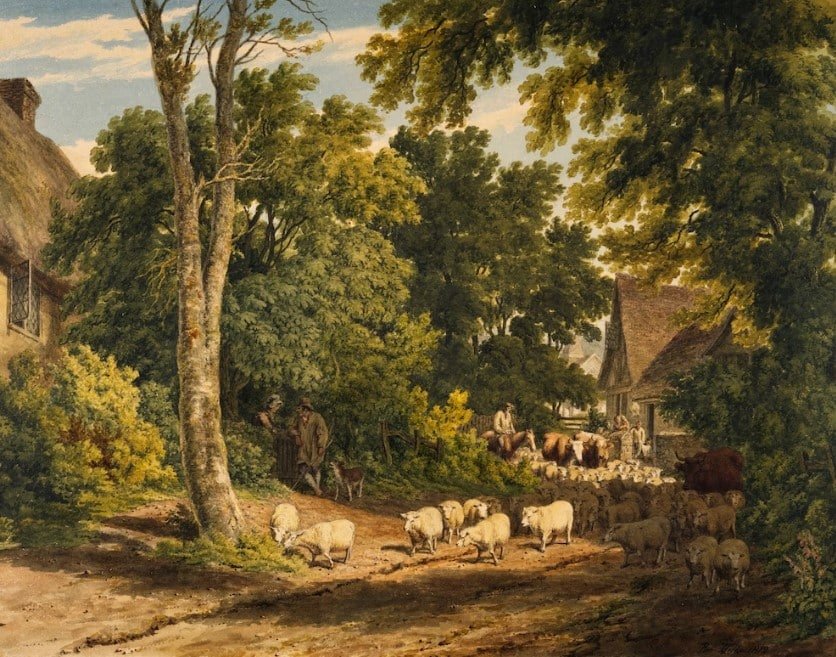Education
Art’s Golden Age: The High Renaissance Epoch

The High Renaissance, a period that spanned roughly from the 1490s to the 1520s, represents the peak of the visual arts during the Renaissance era. This period is celebrated for its significant contributions to the disciplines of painting, sculpture, and architecture, which were pioneered by iconic figures such as Leonardo da Vinci, Michelangelo, and Raphael. These artists pushed the boundaries of creativity and technical skill, setting enduring standards for the artistic endeavors that followed.
The hallmark of the High Renaissance was a harmonious balance and integration of art, science, and philosophy. Artists were no longer seen merely as craftsmen, but as intellectuals. Their work embodied an ideal of harmony, demonstrated by the use of perspective, anatomical precision, and a balance between realistic representation and idealization of the human form.
The enduring impact of the High Renaissance is evident in its sweeping influence over art, culture, and the broader tapestry of society. At the heart of this era’s achievements is the transformation of high painting, where the confluence of science and creativity birthed techniques that brought forth images of stunning realism and profound emotional resonance. The artists of this golden age were not just painters; they were alchemists of light and geometry, translating the world into canvases imbued with life-like vitality and meticulously calculated precision. Their work elevated high painting during the Renaissance from mere representation to an eloquent language of feeling and form, forever altering the landscape of visual arts.
Technological and Methodological Innovations
The artists of the High Renaissance were innovators not only in artistic vision but also in technique. They developed new methods of oil painting, which allowed for richer colors, more subtle shading, and a greater range of effects than the tempera paint used in the earlier Renaissance. This period also saw the refinement of sfumato and chiaroscuro, techniques that enhance the play of light and shadow on the surface of the painting to create a more three-dimensional illusion.
The use of perspective was mastered during this era, with artists like Leonardo da Vinci employing scientific principles to their art to create realistic space and depth. His famous work, “The Last Supper,” exemplifies this mastery, with its use of a vanishing point to draw the viewer’s eye into the depth of the scene.
Cultural and Philosophical Contributions
The High Renaissance was not just about technical achievements; it also represented a cultural and philosophical zenith. The era was characterized by a humanistic philosophy that placed a high value on human potential and experience. Artists began to focus on the representation of the individual, the subtleties of human emotion, and the grandeur of the natural world.
This period saw the creation of some of the most iconic works in the history of art, which continue to be studied and revered for their complexity and beauty. Michelangelo’s Sistine Chapel ceiling and Raphael’s frescoes in the Vatican are prime examples of how High Renaissance art combined aesthetic beauty with deep philosophical and theological meaning.
Artistic Standards and Education
The High Renaissance set new standards for artistic training and the role of the artist in society. Artists were expected to be well-versed in geometry, philosophy, and literature, reflecting the era’s belief in the well-rounded “Renaissancge man.” The period’s emphasis on learning and education for artists helped to elevate their social status, moving them away from the medieval perception of artists as mere artisans to being viewed as creative geniuses.
Influence on Subsequent Art Movements
The influence of the High Renaissance did not end with the close of the 16th century. It set the stage for Mannerism and subsequently the Baroque period. The perfection sought by High Renaissance artists was pushed to new and sometimes more extravagant expressions in these later movements. Even into the modern era, the artistic principles and techniques developed during the High Renaissance continue to inform the training and work of artists.
Preservation and Appreciation
The preservation and appreciation of High Renaissance art have become a cultural priority. Many of the period’s masterpieces are housed in the world’s leading museums, where they are carefully conserved. The study of these works forms a central part of art historical scholarship, ensuring that the legacies of the artists and their creations endure.
Conclusion
The legacy of the High Renaissance is indelibly etched into the annals of art history. It represents a period when artistic skill, intellectual pursuit, and an appreciation for the beauty of the natural and human form coalesced to produce works of profound influence. The techniques, philosophies, and standards set during this time continue to resonate, demonstrating the timeless nature of High Renaissance art and its enduring impact on culture and society. The high painting during the Renaissance remains a touchstone for artistic excellence, a benchmark against which all other artistic periods are often measured.
-

 Celebrity4 weeks ago
Celebrity4 weeks agoIs YNW Melly Out Of Jail? What Is The YNW Melly Release Date, Career, Early Life, And More
-

 Sports4 weeks ago
Sports4 weeks agoMore Than Just a Game: How College Sports Can Shape Your Future
-

 Tech3 weeks ago
Tech3 weeks agoAI Software: Transforming the Future of Technology
-

 Tech3 weeks ago
Tech3 weeks agoAll About Com. Dti. Folder Launcher: Features, Benefits, Tips, And More













